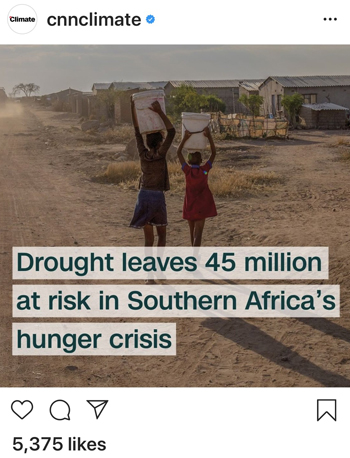
“If I could crystal-ball into 2020, it’s going to be the anti-polished accounts that will do better.”
When Eva Chen, director of fashion partnerships at Instagram delivered the above quote to a roomful of publishers at the Instagram Next summit in New York, I bet you could hear a pin drop.
After all, Instagram for so long has been a platform about polish and sheen, about presenting your best self to the world – and brands and influencers alike have flourished on the platform for years with flat lays and carefully curated grids.
But as we move into a new decade, Instagram is also turning ten years old – and has evolved into a completely different platform to the feed of hyper-filtered photos users fell in love with back in 2010.
Now, brands and publishers can’t just be ‘good at the feed’ – they also need to have a strong strategy for Instagram Stories, for Live, for video, for IGTV and judging by recent publisher trials, Instagram Shop. They also need to figure out how to land on Explore – a growing place younger users turn to when they log into the app, and a key place to be if you want to go viral.
And Eva’s comments about anti-polish ring true – users on the platform are more sophisticated than ever, and just posting visually stunning images isn’t enough to guarantee a strong engagement rate and growth. In fact, accounts with pretty information-dense posts are flourishing.
It’s an overwhelming task for social media editors and requires as much planning and pivoting as the Facebook algorithm.
Having worked in publishing as a social media editor and strategist for longer than Instagram has been around (ancient in social media terms!), here’s what I think the dos and don’ts are for making the most of Instagram in 2020.
Just posting visually stunning images isn’t enough to guarantee a strong engagement rate and growth.
DON’T obsess over the grid
It’s easy to become a bit too obsessed with the Instagram grid. And it’s understandable. In many ways, your grid is a shop window as to what your account is about – it needs to feel cohesive and to show users your brand identity – but not at the expense of good content users want to engage with.
There was a real trend a few years ago for ‘mosaic’ grids – where accounts would post lots of different single images to the feed, and when you looked at a brand’s grid, it made a picture or pattern. I hated it. Because while super-fans of your brand might click to see, to the average user scrolling through their feed, it’s a jarring post that doesn’t make sense. And it completely over-estimates the importance of the grid. Instagram has told us time and time again that roughly around 99 percent of impressions generally come from feed view, not from grid view – so you’re alienating new users with this strategy.
Optimise your content for the feed and think about how users will encounter your content on Explore, and you’re likely to see a better engagement rate – rather than forcing a post because it matched the ‘theme’ of your grid.
DO think about how younger users want to consume news
Instagram is a real opportunity for legacy publishers to reach a younger audience. This doesn’t mean posting Baby Yoda memes (although right now, that’s a pretty strong engagement strategy) – but thinking about the way younger audiences want to consume media – and that’s not to be driven off platform to your website constantly.
One of the fastest growing publisher accounts in 2018 was BuzzFeed’s @World account – which created news stories re-formatted for the Instagram feed. The captions were long, but the images were informative and eye-catching, to make a user stop scrolling. By adding in a news agenda that appealed to a young and global audience, and not talking down to their users, World has become a huge success.

I’ve seen this approach adopted by countless publishers who aren’t about glossy imagery, from the Daily Mail to Ladbible – and it’s completely changed the way people consume news on Instagram.
There is a tendency for some brands to use posts to try and drive people towards the ‘link in bio’ but ensuring that the subject inspires engagement is key and more important to your overall account health than any incremental traffic to your website.
99 percent of impressions generally come from feed view, not from grid view.
DON’T neglect Instagram Stories
Something I struggled with as a social media editor was investing time and effort into Stories, as the content was only up for 24 hours.
But the Stories platform has revitalised Instagram. Mark Zuckerberg estimates that over one billion people are now using Stories across Instagram and Facebook (mainly Instagram if we’re honest). It’s the fastest growing part of Instagram, and user adoption has been stratospheric in three years.
I think Stories initially excited publishers because it was a traffic driver, after years of being unable to get people off Instagram and onto websites. And this meant many went down the ‘swipe up’ route, using Stories to drive people to articles.
But now, competition is fierce on Stories – everyone from your best friend to celebrities and influencers are using Stories to give unparalleled access into their lives. A single ‘swipe up’ Story can feel pretty flat when users can watch someone at a fashion show or see a tour of their newly decorated home.
To be successful at Stories and to engage users, publishers now need to embrace storytelling, and what makes the platform unique, to thrive.
One of our most successful Stories brands at Hearst, Women’s Health, was an early adopter of the platform, plotting content around the users’ mood, utilising all the tools, like polls, quizzes and Q&As, and tapping into the ‘nosy’ aspect of Stories, from getting a cover star to show their daily workouts, to doing a tour of the latest gym class launch.

All these posts are shot on a phone and while they look cohesive, are not overly designed so they seamlessly flow alongside Stories from other users. They do use the swipe up function, but it’s about encouraging the user to go deeper – the content on Stories is meaty enough to enjoy alone.
DON’T forget about IGTV
After a slow start in July last year, IGTV really came into its own when Instagram introduced the feed preview function, which made it easier for these videos to reach users. Since then, we’ve found IGTV has been a great place for longer-form video to live at Hearst – some of Cosmopolitan’s Beauty Lab videos, where the team trial beauty products, have racked up millions of views.
What I find exciting about IGTV is that it can be a great place for original, talent-led video content that also works on YouTube to thrive – but I’ve also seen more viral-style UGC video that used to work perfectly for Facebook, perform well. Food Insider has completely embraced IGTV over everything – and it’s paid off, because their content – viral food video compilations like ‘The Best Mickey-Shaped Snack at Disneyworld’ – get great engagement alongside the views.
DO tap into a niche
Another trend I’ve noticed on Instagram is that accounts with a real purpose or niche can quickly gain a following. At Hearst, Country Living has become one of our most engaged-with and fastest growing Instagram accounts, because it has a very strong USP and purpose – it taps into a love of the countryside and nature, and users know what they’re going to get – whether it’s cute pictures of hedgehogs, or thatched cottages. CNN recently launched CNN Climate – a clever move after realising that their younger audience were extremely passionate about climate change, but they didn’t want their main account to solely focus on the subject.

Instagram is a real opportunity for legacy publishers to reach a younger audience.
DO use your access and find personalities that can represent your brand
The last decade has really been the era of the influencer. Audiences now respond to personality on social platforms, and younger audiences have grown up on a diet of ‘people as brands’ – so brands themselves need to show the people behind them to excite and engage users.
Journalists and editors have access to incredible events, from red carpets to beauty launches – that seem like work, but actually are interesting to followers, and make easy Stories content. Obviously not everything makes great content, and it’s about testing what your followers want to see – but showing behind the scenes, insider access gives people an easy reason to follow you. Influencers have been doing this for years.
Remember that your editors and journalists are experts on your brand and subject matter. The Cut do this brilliantly. Their team regularly feature on their Stories, trying on new items or speaking out on a topic, and it just cements their image as an insider-y, yet approachable brand in the fashion space.
Fortune favours the early – but you DON’T have to use every part of Instagram if it doesn’t work for your brand
General advice from Instagram is to use all parts of the platform – they say it’s more likely to land you on Explore, which in turn helps you grow your account and reach new users. They also advise people to be early adopters of new features.
But not everyone has this flexibility (or more importantly, the resource) to do everything on Instagram at once. Think about why people follow you, and what solid content opportunities that can bring, rather than desperately trying to hit all of the parts of Instagram on the off-chance it helps you in an algorithm. If you’re a glossy publisher with a strong ecommerce strategy, then Shop could be a good opportunity, because people look to you for this kind of inspiration. If you’re a news publisher, you 100% have the kind of agenda that lends itself to Live, and Stories – because people are turning to you for constant coverage of a topic. The platform is your oyster.
To be successful at Stories and to engage users, publishers now need to embrace storytelling, and what makes the platform unique, to thrive.
This article was first published in InPublishing magazine. If you would like to be added to the free mailing list, please register here.












